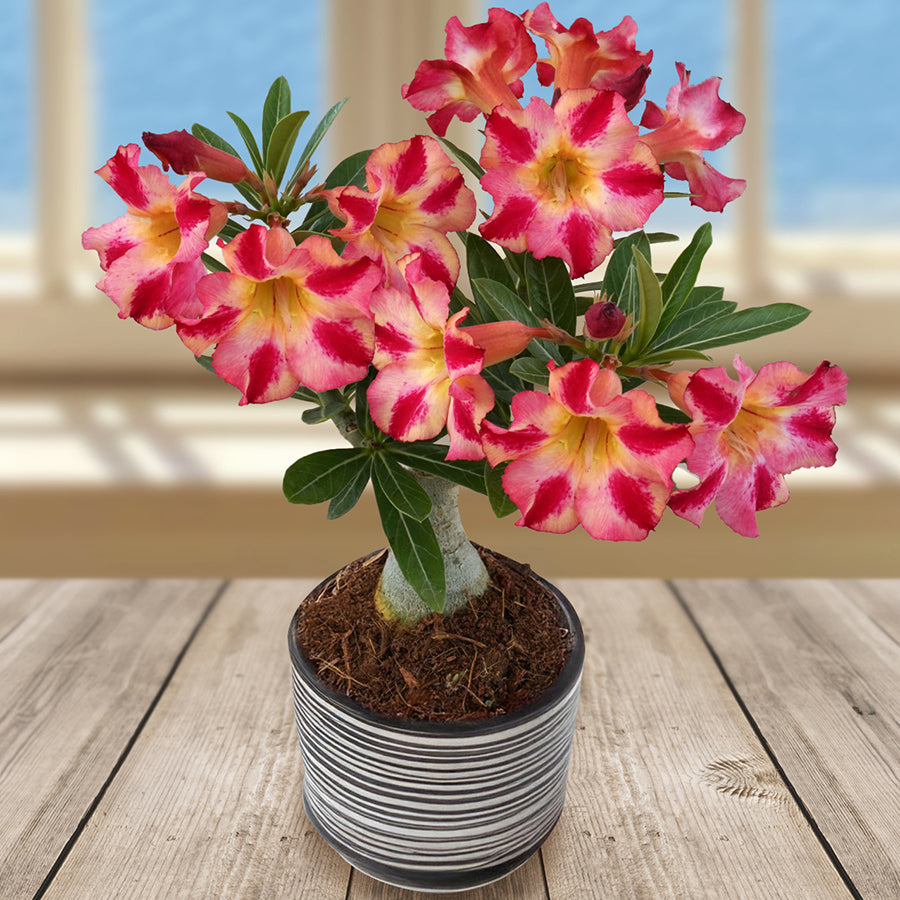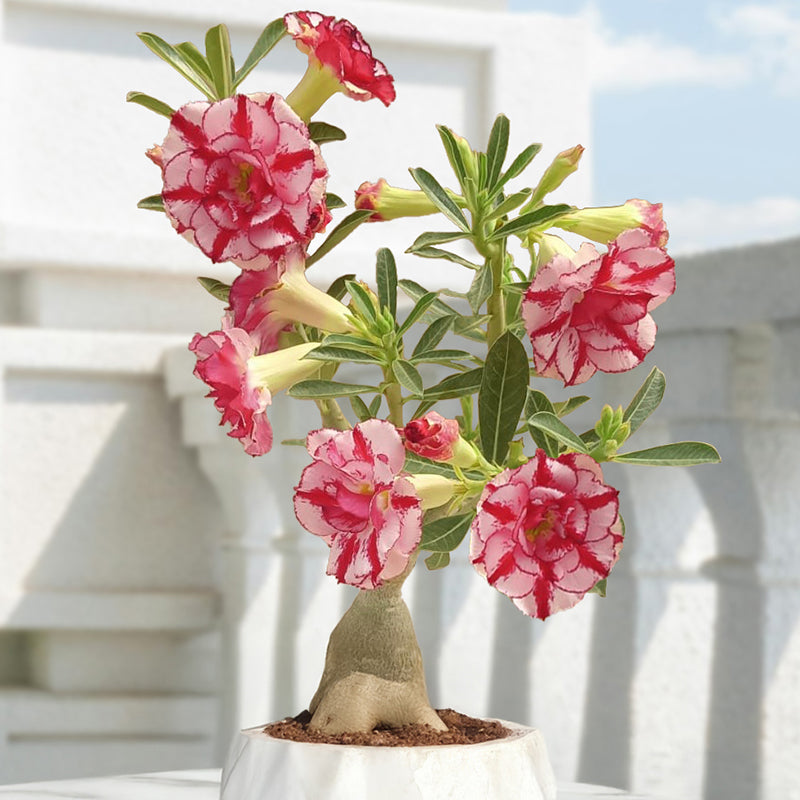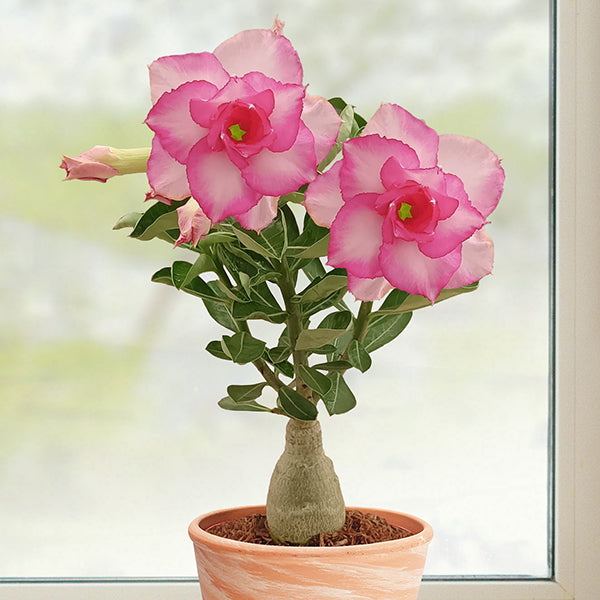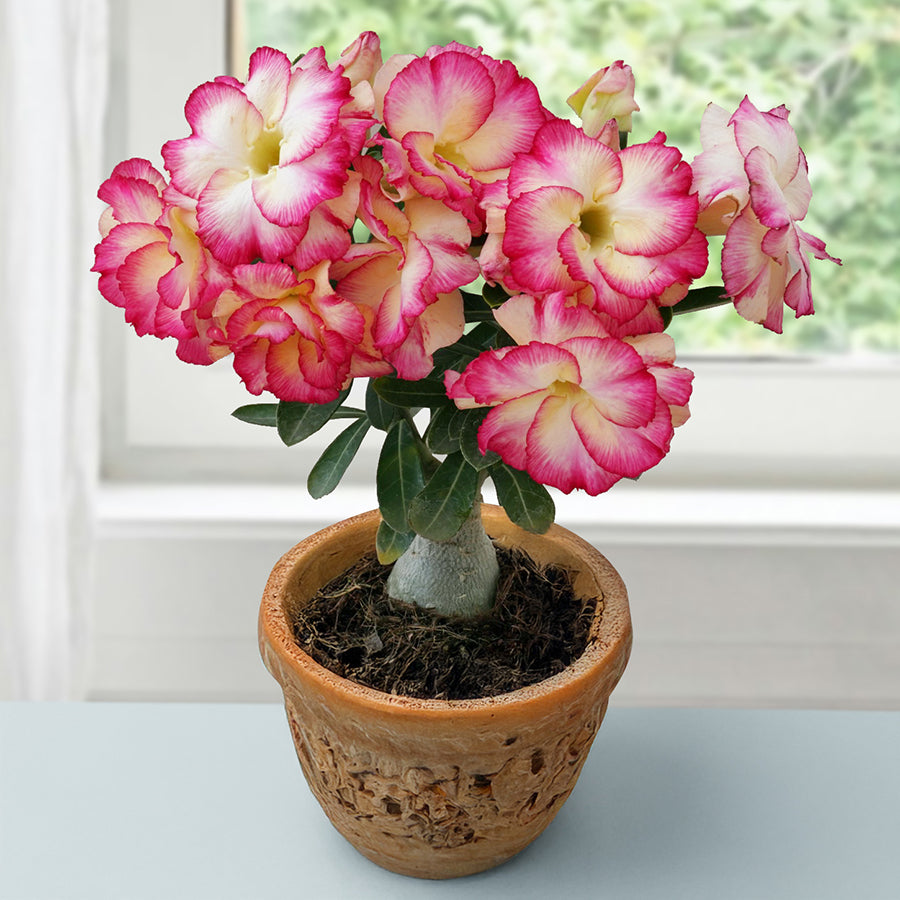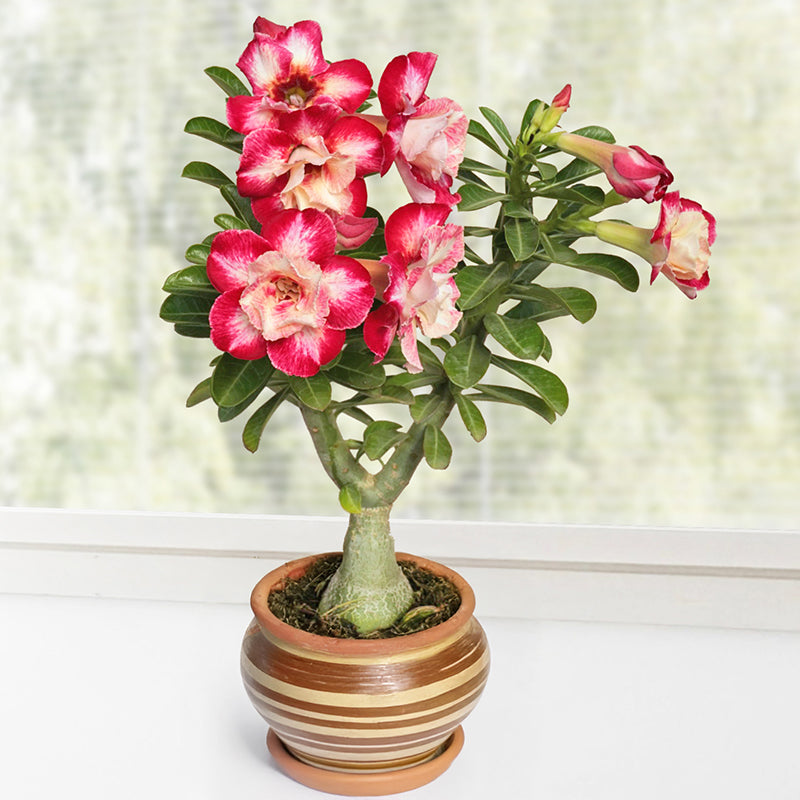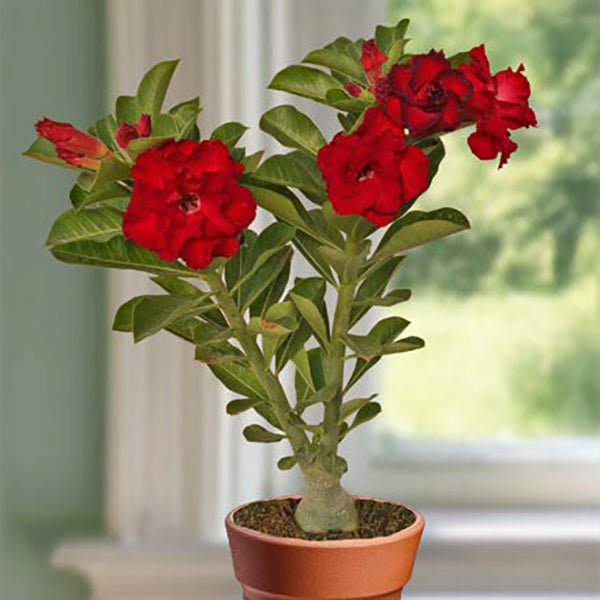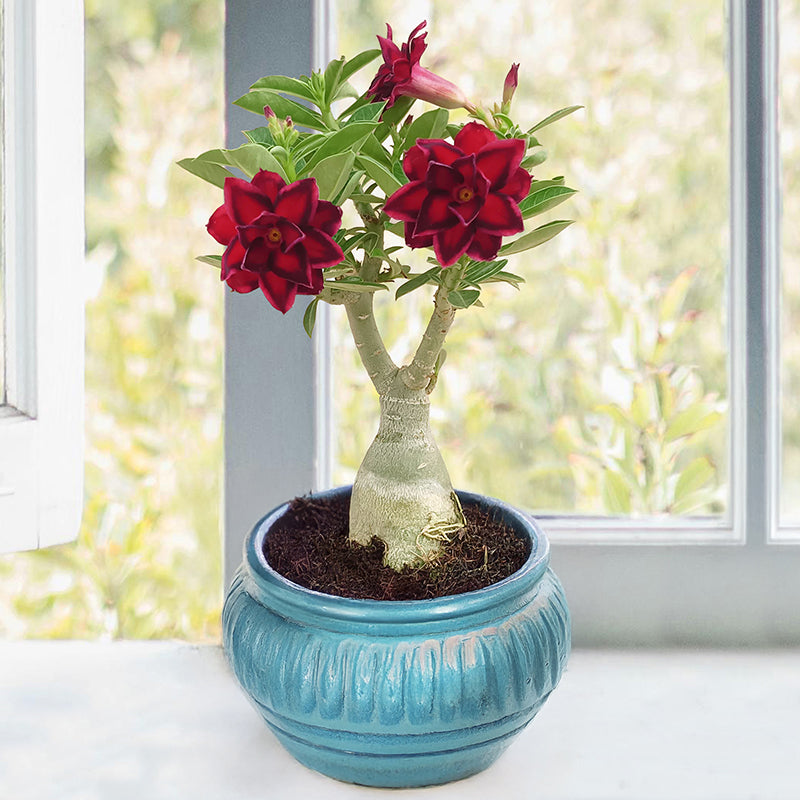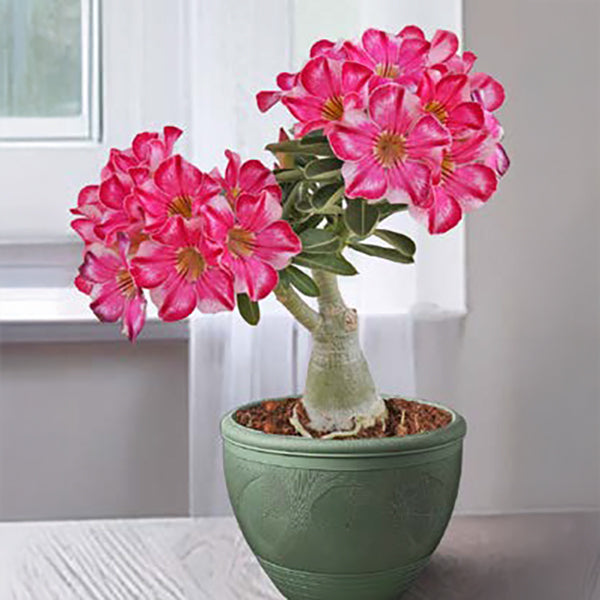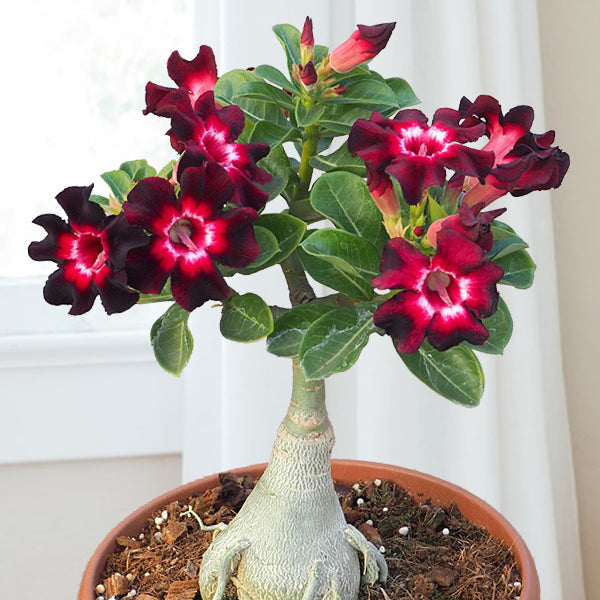Desert Rose Plants (Adenium)
Adeniums, commonly known as Desert Rose, are eye-catching succulents native to Africa and the Arabian Peninsula. They are well-loved for their vibrant, trumpet-shaped flowers that bloom in many colors with both single and double blossoms. These plants boast a unique, thick caudex at the base, which stores water for periods of drought. Desert Rose thrives in sunny, well-draining environments, making them suitable for container gardening or as striking focal points in rock gardens. They're low-maintenance, drought-tolerant, and pest-resistant, which adds to their appeal. See all of our Desert Rose plants for sale at Logee's below.

